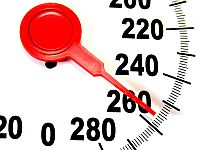Welcome to Protein Diet Guide
The Protein Power Diet And Peripheral Arterial Disease Article
 To bookmark this article for further reading, click here.
To bookmark this article for further reading, click here.
The Popular Protein Power Diet
The protein power diet is currently one of the most popular high protein diets people use today.
The protein power diet involves eating an adequate amount of protein and limiting carbohydrates. Practitioners can choose from three variations of the diet.
They can calculate protein requirements and count carbs, receive a protein requirement table and count carbs, or use portion sizes as a sole measure of protein and carbohydrate intake.
If you are considering starting a high protein low carbohydrate diet, then you should know more about protein. Protein is one of the most basic parts of the human body. It makes up about 16 per cent of total body weight and is present in muscle, hair, skin and connective tissue.
Protein also plays a major role in cell development and the presence of fluids in the body. Many of the body’s important compounds are made up of protein, including enzymes, hormones, neurotransmitters and DNA.
The body uses protein constantly, so it is important that people have enough protein in their diet. And those considering beginning a protein power diet will need to pay special attention to the amount of carbs they take.
Protein is made up of smaller units called amino acids. There are nine amino acids that the body cannot manufacture, so it is important that people get these amino acids from the foods they eat. They can get these amino acids from meat, eggs and dairy products, as well as some plants.
The amount of protein that an average person needs varies depending on their age, size and activity level. A person who is looking to build muscle mass and increase their fitness level may want to consider a protein power diet.
People who engage in endurance exercise or heavy resistive exercise can benefit from adding additional protein to their diets.
For the average person, 10 to 20 per cent of caloric intake can be calories from protein. This is an estimate of the minimum number of calories a person needs to stay healthy and a person on a protein power diet will need more.
The more calories a person needs to stay healthy, the more protein they will need also. However, people who are dieting should not reduce their protein intake to the amount of reduced calories they are ingesting.
Ingesting too much protein can be harmful to the kidneys or to people who have kidney disease. And, increased protein can be helpful in treating obesity.
If you’re considering beginning a high protein diet, consult your doctor about your health and the advisability of increasing the amount of protein you ingest on a daily basis. If all is well, a protein power diet can be an excellent way to meet your weight and fitness goals.



